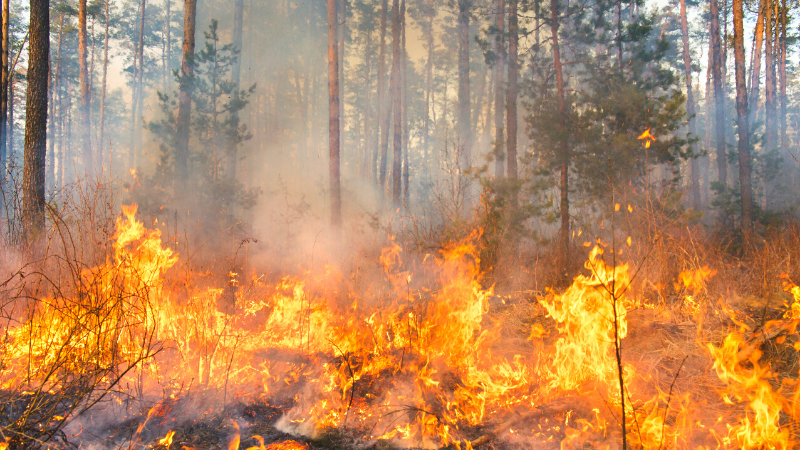Technology
Forest Microbes Found To Survive & Multiply In Megafires: Research

New research from the University of California (UC), Riverside shows that the fungi and bacteria that survived the redwood tanoak forest megafires were microbial ‘cousins’ that often increased in abundance after ‘feeling the flames’.
Fires of unprecedented size and intensity, called megafires, are becoming increasingly common. In the West, climate change is causing rising temperatures and earlier snowmelt, extending the dry season when forests are most vulnerable to burning.
Though some ecosystems are adapted for less intense fires, little is known about how plants or their associated soil microbiomes respond to megafires, particularly in California’s charismatic redwood tanoak forests.
The UCR team is contributing to this understanding with a paper in the journal Molecular Ecology.
In addition to examining megafire effects on redwood tanoak forest microbes, the study is unusual for another reason. Soil samples were pulled from the same plots of land both before and immediately after the 2016 Soberanes fire in Monterey County on the Pacific coast in the US state of California.
The team was not surprised to find that the Soberanes fire had a massive impact on bacterial and fungal communities, with as much as a 70 per cent decline in the number of microbe species. They were surprised that some yeast and bacteria not only survived the fire but increased in abundance.
Bacteria that increased included Actinobacteria, which are responsible for helping plant material decompose. The team also found an increase in Firmicutes, known for promoting plant growth, helping control plant pathogens, and remediating heavy metals in soil.
In the fungal category, the team found a massive increase in heat resistant Basidioascus yeast, which is able to degrade different components in wood, including lignin, the tough part of plant cell walls that gives them structure and protects them from insect attacks.
Perhaps the team’s most significant finding is that fungi and bacteria – both those that survived the megafire and those that didn’t – appear to be genetically related to one another.
In general, little is known about fungi and the full extent of their effects on the environment. It is imperative that studies like these continue to reveal the ways they can help the environment recover from fires.
-

 Leaders Speak2 months ago
Leaders Speak2 months agoDhofar International Development and Investment Company: Driving Sustainable Growth and Strategic Synergies in Oman’s Investment Landscape
-

 Economy1 month ago
Economy1 month agoMaal Card: What Oman’s New National Payment Card Means for Everyday Users
-

 Events2 months ago
Events2 months agoOER Corporate Excellence Awards 2025 Honours Entities and Innovations in Oman
-

 Arts and Culture2 months ago
Arts and Culture2 months agoOminvest and Bait Al Zubair Launch “Future Frames” to Empower Youth through Art and AI
-

 News1 month ago
News1 month agoSheikh Suhail Bahwan, Chairman of Suhail Bahwan Group, Passes Away
-

 Economy1 month ago
Economy1 month agoOman Unveils Official Omani Rial Symbol in Landmark Move to Boost Global Currency Presence
-

 News4 weeks ago
News4 weeks agoOIG Appoints New CEO to Lead Its Next Chapter of Excellence
-

 News4 weeks ago
News4 weeks agoReport: How India & The Middle East Are Exploiting Immense Economic Synergies




























